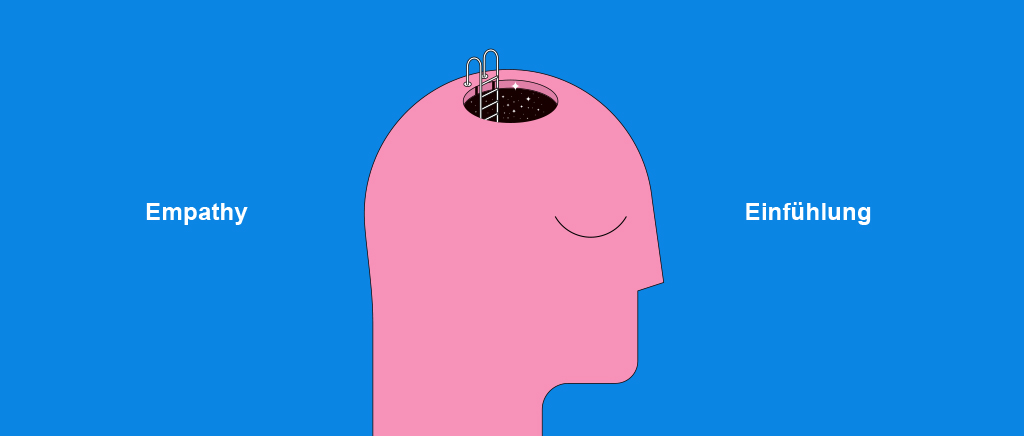Empathy is having a rough go lately
In 2010, a study from the University of Michigan’s Institute for Social Research found that college students’ self-reported levels of empathy have been in steady decline since 1980. The decline was especially steep over the last ten years, with students involved in the study being 40% less empathetic than students from a decade prior. Yikes. The reasons provided for this nosedive into a world overflowing with Patrick Batemans were numerous and predictable, if not slightly hand-wringy: Too much internet. Too much smartphone. Too much information. Too much tech.
Empathy is also up against a backlash amongst academic and intellectual circles, with its very nature and purpose being put into question. “When we rely on empathy, we think that a little girl stuck down a well is more important than all of climate change, is more important than tens of thousands of people dying in a far away country,” says Paul Bloom, psychology professor at Yale University and author of Against Empathy: The Case for Rational Compassion. “Empathy zooms us in on the attractive, on the young, on people of the same race. It zooms us in on the one rather than the many. And so it distorts our priorities.”
Empathy is actually bad for us, apparently. Not so much a wellspring of kindness and understanding, but just a cognitive bias. And an easily manipulated one to boot.
But perhaps the most grim development yet for the battered reputation of this once vaunted virtue is that it has been hailed as 2017’s marketing buzzword of the year. Empathy, they say, is the new authenticity, only more real, more genuine. This is a real and genuine bummer for us at The Sound, because empathy is so central to how we go about our business, and ideally, how we live our lives.
What is empathy, really? Saying the word itself is easy enough. It has a certain somnambulistic quality that allows it to effortlessly roll off the tongue and escape through one’s lips. Putting it into practice, however, is more difficult. While it is used willy-nilly to evoke the pseudo-emotions of the quasi-caring, few actually understand what empathy is.

That’s because empathy is a work in progress
A relatively new idea, the term was coined in 1909 by British cognitive psychologist Edward Titchener. Here’s a brief rundown of Titchener’s childhood: he was born to a mother from a prominent family who eloped with a common clerk, and was subsequently disowned by her family. His dad soon died of tuberculosis, so he spent his childhood moving from town to town with little to no money, his four other siblings in tow, until he went to live with his well-to-do grandfather. But his grandfather’s wealth soon collapsed, and then he too died shortly thereafter. Leaving Titchener to fend for himself.
So, not a fun upbringing by any measure, but perhaps one that helped spur him towards coming up with a very good idea. The word empathy was Titchener’s anglicization of the German term Einfühlung, meaning ‘feeling into’. For Titchener, the word helped describe the process through which one person gained insight into someone else’s mind; how they thought, how they felt, their lived experience, and so forth.
From Titchener onwards, empathy continued to evolve as numerous philosophers took a crack at defining what they thought it was. Theodor Lipps argued that empathy was the primary basis for recognizing each other as ‘minded creatures’. Max Scheler added that we are able to recognize mental states because they are expressed in states of our bodies; facial expressions, gestures, tones of voice, posture, et cetera. From here, empathy finds its way into the work of various therapists and psychoanalysts, each with their own spin. And in 1996, it serves as the basis for the discovery of mirror neurons – the mimetic motors in our brains that spark and fire with feeling when we see someone doing something. Empathy, scientists now believe, has deep evolutionary origins.
Which leads us to the present day, and The Sound’s definition of empathy, which is also a work in progress. Take away the outputs, the rationale, the category, the product … and strip market research down to just the bare act of being there, and what do you have? A group of people trying to understand another group of people. Usually, it’s a very different group of people, and ideally, that understanding is meant to solve a problem. To make something work better. Or to bring more happiness, contentment or satisfaction. Between the two groups is our empathetic ideal, which contains three parts:
The first is emotional: you imagine the feelings and experiences of another, going beyond what you can perceive or what they might tell you. You feel into them.
The second is logical: you sit and watch and take notes, you document, you perform the necessary rigor that is required to truly consider where those emotions come from and what they mean.
And the last part is what you do with this emotion and logic: the conclusion you draw, the action you take, the desire to do something with what you’ve just learned about someone else’s life and perspective.
We think you need all three of these steps to get close to what the word empathy suggests. You can’t really do feelings unless you try to understand them, and if you understand them, then surely there’s something you can do about it.
Empathy is easy to knock and even easier to co-opt when it’s a cardboard cut-out rather than the full package. Meaning, empathy isn’t just sympathy with some fancy window dressing. It should be something deeper. Something more ambitious and something that tries to make the unknowable, well, slightly more knowable.


